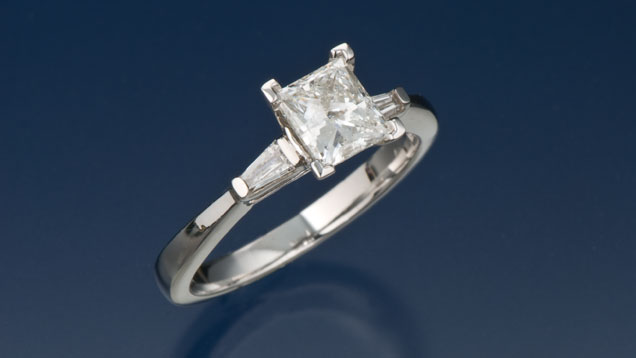Blue Nile: Higher Diamond Prices Result in Reduced Sales
August 11, 2014

Online diamond retailer Blue Nile CEO Harvey Kantor worried publically at the close of 2013 that consumers were beginning to resist higher diamond prices. And as prices for diamonds have risen this year ‒ especially half-carat to one-carat stones ‒ Blue Nile’s sales have indeed been slowing.
The company reported that “the diamond price environment” in the second quarter of this year resulted in a 1.3% decline in sales compared to the same period of 2013. While it is not the first sales decline in the company’s 15-year history, this one occurred within a relatively healthy retail environment after years of double-digit growth.
The largest decline, 4.6%, was in engagement ring sales, while non-engagement ring sales increased 2.6%. Engagement ring sales comprise about 55% of the company’s business.
Not surprisingly, Blue Nile’s sales declines were concentrated in stones smaller than one carat, a segment that had risen in price as much as 10% this year. Sales of larger diamonds, although a small part of the company’s revenue, actually increased because prices for these goods are relatively stable.
Beyond diamond price increases, Blue Nile is facing strong competition from traditional jewelers building their online presence. So much so, that the company is toying with the idea of going brick-and-mortar – or at least brick-and-boutique.
Blue Nile has set up trial boutiques in The Wedding Suites areas of two Nordstrom’s department stores, one in the Seattle area and one in suburban New York. Prospective buyers can look at and handle the diamond jewelry, but purchases are still completed online via an onsite computer or the customers’ mobile phones.
The idea, Kantor said, was to increase the “conversion rate” (clicks to sales), particularly among consumers who check Blue Nile before going shopping for a diamond ring at retail jewelers.
Blue Nile still anticipates an increase in sales for the calendar year, estimating between $475 and $490 million, compared to $450 million in 2013. That total represented a 12.5% increase from the previous year.
The company hinted that it will resist further diamond price increases, which will increase the pressure of diamond manufacturers’ bottom lines, even as rough prices continue to climb.
De Beers hiked prices an average of 2-3% at its July sight on medium quality rough that polishes to less than one carat – exactly the same goods Blue Nile claims are meeting consumer resistance.
The company reported that “the diamond price environment” in the second quarter of this year resulted in a 1.3% decline in sales compared to the same period of 2013. While it is not the first sales decline in the company’s 15-year history, this one occurred within a relatively healthy retail environment after years of double-digit growth.
The largest decline, 4.6%, was in engagement ring sales, while non-engagement ring sales increased 2.6%. Engagement ring sales comprise about 55% of the company’s business.
Not surprisingly, Blue Nile’s sales declines were concentrated in stones smaller than one carat, a segment that had risen in price as much as 10% this year. Sales of larger diamonds, although a small part of the company’s revenue, actually increased because prices for these goods are relatively stable.
Beyond diamond price increases, Blue Nile is facing strong competition from traditional jewelers building their online presence. So much so, that the company is toying with the idea of going brick-and-mortar – or at least brick-and-boutique.
Blue Nile has set up trial boutiques in The Wedding Suites areas of two Nordstrom’s department stores, one in the Seattle area and one in suburban New York. Prospective buyers can look at and handle the diamond jewelry, but purchases are still completed online via an onsite computer or the customers’ mobile phones.
The idea, Kantor said, was to increase the “conversion rate” (clicks to sales), particularly among consumers who check Blue Nile before going shopping for a diamond ring at retail jewelers.
Blue Nile still anticipates an increase in sales for the calendar year, estimating between $475 and $490 million, compared to $450 million in 2013. That total represented a 12.5% increase from the previous year.
The company hinted that it will resist further diamond price increases, which will increase the pressure of diamond manufacturers’ bottom lines, even as rough prices continue to climb.
De Beers hiked prices an average of 2-3% at its July sight on medium quality rough that polishes to less than one carat – exactly the same goods Blue Nile claims are meeting consumer resistance.
About the AUthor
Russell Shor is senior industry analyst at GIA in Carlsbad, California.



